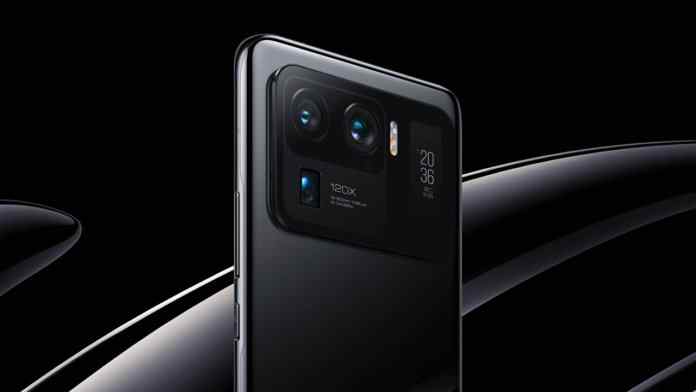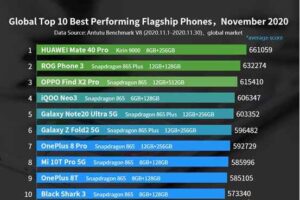Best Camera Smartphones 2021
Tests on certain criteria help experts to form an unbiased opinion about the quality of photo and video shooting, such as noise, contrast, exposure, blur, night mode, etc. We will tell you in more detail about the 10 Best Camera Smartphones in 2021.
Buy an expensive smartphone and discover the true meaning of the expression “sorry, I shot with a slipper,” what could be more offensive? And to determine which smartphone will be a “slipper”, and which one can take a bright, clear, and detailed picture, you need to study the data of the independent laboratory DxOMark, which regularly compiles lists of the best smartphones with a great quality camera.
10 Smartphones with Best Camera in 2021
-
Honor 30 Pro +
- screen: 6.57 ″ (2340 × 1080) 90 Hz
- RAM: 8 GB
- memory: 256 GB, memory card slot
- cameras: 50 MP, 8 MP, 16 MP
- battery: 4000mAh
This smartphone has an OLED screen with a refresh rate of 90Hz, making it a pleasure to watch movies and other dynamic content on it. And the powerful Kirin 990 processor and a large amount of RAM are responsible for ensuring that this content, including demanding games, runs quickly and without stuttering. By default, the main camera shoots at 12.5 MP, using AI to combine 4 pixels into one.
In this mode, the detail is almost perfect, only to the edges of the picture the sharpness drops slightly. However, if necessary, you can switch to 50MP shooting mode. Effective optical zoom allows you to see distant objects clearly, and optical stabilization compensates for a handshake. The maximum digital zoom reaches 50x.
In terms of video, the Honor 30 Pro + manages 4K resolution (60fps) with smart hybrid stabilization. The selfie camera with a resolution of 32 MP and an aperture of f / 2.0 has fast autofocus and takes photos with correct color reproduction, excellent detail, and sharpness.
Pros: Stereo speakers, splash-proof housing, 5G support, supports reverse charging, and wireless charging up to 27W, 40W fast charging.
Cons: no Google services, hybrid memory card slot, only expensive Huawei branded memory cards – NM is suitable.
-
Samsung Galaxy S20 Ultra 5G (Exynos)
- screen: 6.9 ″ (3200 × 1440) 120Hz RAM: 12 GB
- memory: 128 GB, memory card slot
- 4 cameras: 108 MP, 12 MP, 48 MP
- battery: 5000 mAh
The main camera capabilities of the Samsung Galaxy S20 Ultra 5G are impressive: it has a digital 100x zoom and a 108MP main sensor with optical stabilization. By default, still, images are captured at 12MP with 9 pixels intelligently merged into one.
Telephoto module with a resolution of 48 MP has 4x optical zoom and optical stabilization. The wide-angle module has a resolution of 12 MP. TOF 3D sensor is used for portrait mode. There is also a night mode, in which zooming up to 10x is available.
The smartphone is also capable of shooting video in 8K at 24 fps or in 4K at 60 fps. The S20 Ultra has a slight overabundance of colors and supernatural sharpness (some objects may be surrounded by a whitish outline if brought closer to the distance of visible individual pixels).
Auto HDR will allow you to take “fun” pictures even on a cloudy day. The front camera with a resolution of 40 MP (10 MP by default) can record video at a resolution of 2160p at 60 fps. Photo quality is excellent even under artificial lighting conditions.
Selfimoji can be used. In addition to the excellent main and front cameras, the Galaxy S20 Ultra 5G has a very bright and contrasting AMOLED screen with 509 PPI and a refresh rate of 120 Hz. And the Exynos 990 processor will pull any mobile AAA game at maximum speed.
Pros: IP68 water-resistant, good night mode, 5G support, stereo speakers, fast, wireless and reverse charging support.
Cons: High magnification shots are blurry, hybrid memory card slot, no 3.5mm headphone audio out.
-
Oppo Find X2 Pro
- screen: 6.7 ″ (3168 × 1440)
- RAM: 12 GB
- memory: 512 GB
- 3 cameras: 48 MP, 48 MP, 13 MP
- battery: 4260 mAh
The AMOLED screen of this model supports a refresh rate of 120 Hz for the smoothest picture possible. And support for modern technologies such as Motion-Engine and Absolute Color Accuracy allows the smartphone to reduce video shake on the screen and display a picture with natural color rendition, as in reality.
The main lens of the rear camera has a resolution of 48 MP and a Sony IMX689 sensor. Thanks to its enlarged 1 / 1.43 “size, its ability to” absorb “light is amazing. There is also a 13MP periscope camera (10x hybrid zoom and 60x digital) and a 48MP wide-angle camera with an IMX586 sensor and an f / 2.32 aperture.
The 32MP front camera allows you to take clear, highly detailed selfies even in poor lighting conditions. The Qualcomm Snapdragon 865 hardware platform and a large amount of RAM allow the device to cope with any task – from demanding games at maximum settings to launching multiple applications at once.
Pros: 5G, support for Super VOOC 2.0 technology, which allows you to fully charge the smartphone in 38 minutes, IP68 water protection.
Cons: no headphone jack, no wireless charging, no memory card slot.
-
Xiaomi Mi 10 Pro
- screen: 6.67 ″ (2340 × 1080) 90 Hz
- RAM: 12 GB memory: 512 GB
- 4 cameras: 108 MP, 20 MP, 12 MP, 8 MP
- battery: 4500 mAh
- processor: Qualcomm Snapdragon 865
One of the best camera phones of 2021 occupies an intermediate place between the “just” Xiaomi Mi 10 and the third place in the rating, Xiaomi Mi 10 Ultra. It has a Super AMOLED screen with a refresh rate of 90 Hz, a peak brightness of 1129 cd / m2, and excellent color reproduction, no longer top-end, but still powerful enough to run any game processor and improved stereo speakers over the “regular” 10 models.
A distinctive feature of the rear camera of the Mi 10 Pro is the excellent bokeh effect, but the Dxomark experts were especially impressed by the transfer of textures in the picture, thanks to the excellent work of the telephoto lens.
In addition to the 50x digital zoom, the smartphone camera has a 10x hybrid zoom and 2x optical zoom. It can also shoot in 8K at 30 fps and in 4K at 60 fps. All resolutions have smooth digital zoom. The front-facing 20 MP camera shoots well in good lighting conditions, but under artificial lighting or at dusk there is a “soap”.
Pros: Fast 50W charging, support for wireless charging up to 30W, support for Wi-Fi 6, infrared, support for 5G, bass stereo sound.
Cons: weak front camera, sometimes noise occurs when shooting shaded objects, no water protection, no 3.5 mm jack, no memory card slot.
-
Apple iPhone 12 Pro Max / Apple iPhone 12 Pro
- screen: 6.7 ″ (2778 × 1284) 60 Hz
- RAM: 6 GB memory: 256 GB
- 3 cameras: 12 MP, 12 MP, 12 MP
- battery: 3687 mAh
Low-light conditions in general for the Apple iPhone 12 Pro Max are not a hindrance. The reason – the matrix increased by 47%, which can “absorb” more light. Besides, the 12 Pro and 12 Pro Max have a special LiDAR scanner, which allows you to shoot high-quality portraits with a natural bokeh effect even at night, and run applications with augmented reality.
And a new feature called Smart HDR 3 lets you combine multiple exposures to create the perfect image and automatically correct highlights and shadows. While Apple’s flagships are not yet capable of shooting in 8K, they have the ability to record HDR video and DolbyVision video in 10-bit color.
Supports shooting in 4K resolution at 60 fps. The front camera, like the main one, has a night mode, so even in the pictures taken at twilight, fine details are visible, and the colors are as natural as possible. The Apple A14 Bionic processor, manufactured using a 5nm process technology, provides the smartphone with flawless performance while conserving battery power. And on an OLED screen with 457 dpi, any content looks juicy and clear.
Pros: Wi-Fi 6 support, works in 5G networks, MagSafe accessory support, IP68 enclosure protection, NFC with Apple Pay support.
Cons: no memory card slot, 60 Hz for the flagship display in 2021 is not enough.
Read More: Top 10 Most Popular Online Games in the World
-
Vivo X50 Pro
- Display: 6.56 inches
- Resolution: 1080×2376, 120 Hz
- Processor: Qualcomm Snapdragon 865
- Front camera: 32 MP
- Memory: 8 GB
- Storage capacity: 128 GB
- Battery: 4315mAh
The Snapdragon 865 chipset in the “plus” version is faster than the 765G in the Vivo X50 Pro (these are different models, especially in terms of cameras). The characteristics of the X50 Pro + quad-camera are excellent – the main module of 50 MP Samsung ISOCELL GN1 with optical stabilization, a wide-angle + macro module of 13 MP, a telephoto 13 MP, and a 32 MP portrait module completes the picture.
The owner of the Vivo X50 Pro + features 5x optical, 10x hybrid, and 60x digital zoom. Night mode is available at all focal lengths, and it works well, although it sometimes makes the picture too sharp. And a wide range of adjustments and functions, including manual mode, allow you to make the photo exactly the way you need it.
Video recording can be done in 4K resolution at 60 fps. The selfie camera has a resolution of 32 MP and a Samsung sensor. Pictures from it are very juicy, clear, with well-visible small details. Like many top models, Vivo X50 Pro + received an AMOLED matrix with HDR10 + support and a refresh rate of 120 Hz. Thanks to the high reserve of brightness (1300 cd / m2), the text is easy to read from the screen, even on a sunny day.
Pros: support for 5G frequencies, you can activate the flicker reduction mode at low screen brightness, 44 W fast charging, NFC, Hi-Res Audio.
Cons: No memory card slot, no 3.5mm audio jack, no wireless charging, no water protection.
-
Huawei P40 Pro
- screen: 6.58 ″ (2640 × 1200) 90 Hz
- RAM: 8 GB
- memory: 256 GB, memory card slot
- 4 cameras: 50 MP, 40 MP, 12 MP
- battery: 4200 mAh
The basis of the new imaging system P40 Pro (branded by Leica) is the latest 50MP sensor. Like the P30 Pro, the 40th model’s sensor forms subpixels using the RYYB method (red – yellow – yellow – blue). According to the company’s engineers, thanks to this method, the Huawei P40 Pro copes with ease even with filming at night.
The main camera has optical image stabilization. And if we add here also electronic stabilization, then at the output we have a phone that is capable of taking pictures well in the dark even in automatic mode. In addition to the main lens, the P40 Pro has a 40MP f / 1.8 wide-angle module, a 12MP telephoto lens with 5x (optical) or 50x (digital) zoom, and a time-of-flight sensor for bokeh shots.
Unlike Samsung, photos from Huawei are not supernaturally sharp, although they are slightly inferior to Oppo in terms of the degree of naturalness. As for the zoom, the P40 Pro is not as powerful as the Galaxy S20 Ultra, but the Chinese smartphone is much cheaper.
Pros: IP68 water-resistant, bright OLED screen with a refresh rate of 90 Hz, powerful HiSilicon Kirin 990 processor, 5G support, wireless charging, fast charging.
Cons: lack of Google services, the camera sticks out a lot.
-
Xiaomi Mi 10 Ultra
- screen: 6.67 ″ (2340 × 1080) 120 Hz
- RAM: 8 GB
- memory: 128 GB
- 4 cameras: 48 MP, 48 MP, 12 MP, 20 MP
- battery: 4500 mAh
The three leaders in the DxOMark smartphone camera rating are opened by the model released in honor of the tenth anniversary of Xiaomi in 2020. In addition to ultra-fast charging (from 0 to 100% the phone can be charged in just 23 minutes), a powerful battery, a magnificent AMOLED display with a 120 Hz refresh rate, and high performance, the Xiaomi Mi 10 Ultra also boast excellent cameras.
For the pro version of the “dozen” Xiaomi used the main 108 MP sensor from Samsung, but the Ultra has an OmniVision 48 MP sensor, which surpasses the previous models in its ability to shoot in low light conditions. For great shots at night, you don’t even need the help of “night mode”.
The second 48MP lens, already from Sony, boasts a 5x optical zoom. There is a 20 MP wide-angle lens and a 12 MP telephoto lens (2x zoom). According to experts, the wide-angle module is especially good for its detail, low noise, and good color reproduction. It can also be used for macro photography.
Pros: 120W ultra-fast charging, wireless charging, reversible charging, 5G support, infrared.
Cons: at 100x magnification, the photos are “soapy”, there is no slot for a memory card, and there is no water protection of the case.
-
Huawei Mate 40 Pro + / Huawei Mate 40 Pro
- screen: 6.76 ″ (2772 × 1344) 90 Hz
- RAM: 8 GB
- memory: 256 GB, memory card slot
- 3 cameras: 50 MP, 20 MP, 12 MP
- battery: 4400 mAh
The Huawei Mate 40 Pro + and its less technically advanced version, “just” the Huawei Mate 40 Pro doesn’t have access to the Google Play Store, but the cameras with Leica optics are great. 50MP main camera with f / 19 aperture, 12MP periscope camera with f / 3.4 aperture and 5x zoom, and 20MP f / 1.8 ultra-wide-angle lens – a great set that can meet the creative needs of both an experienced photographer and a budding blogger.
Huawei Mate 40 Pro + is good at taking pictures of different shots – portraits, panoramic landscapes, close-ups, and macro photography. Moreover, even low light – the eternal scourge of smartphone cameras – is not a hindrance for him.
The camera software has many features designed for advanced users, from the ability to draw pictures with light to a special mode specifically for shooting the moon. The selfie camera with a resolution of 13 MP and an aperture of f / 2.4 is complemented by a time-of-flight sensor for determining the depth of the image.
Pros: flagship performance, fast charging that allows you to charge your smartphone in less than an hour, there is a case and a protective film, IP68 water resistance, a large OLED screen with excellent color reproduction, stereo speakers.
Cons: Lack of Google services.
- Processor: Snapdragon 888
- Screen: 6.81 inches, AMOLED, 120 Hz
- Battery: 5000mAh, 67W fast wired charging
- Camera: 50 MP, 48 MP, 48 MP

The Xiaomi Mi 11 Ultra is undoubtedly one of the Best Camera Smartphones in 2021 according to the DxOMark experts. It is a flagship in every way, from its sleek design to the top-end Snapdragon 888 platform to the gorgeous AMOLED display with a 120Hz refresh rate.
The smartphone boasts a wide-angle camera with a Samsung ISOCELL GN2 sensor measuring 1 / 1.12 (or 22.7 mm – almost 3 cm – if you don’t like inches). Xiaomi broke the record for the Huawei P40 Pro Plus, whose sensor was “only” 19.8mm.
Interestingly, the Xiaomi Mi 11 Ultra sensor is not the largest in history – here the record belongs to the 2014 Panasonic Lumix CM1, which, in fact, was a camera with a phone attached to the back panel. The “Chinese” has a triple camera, the main lens is 50 MP, with optical stabilization.
The second, Sony IMX586 ultra-wide-angle lens has a resolution of 48 MP and optical stabilization. And the third is a telephoto lens with 5x optical (or 120x hybrid) zoom and optical stabilization. And all of these three modules can be removed at the same time! This model has laser autofocus of 64 points.
Not surprisingly, with such a richness in its body, the Xiaomi Mi 11 Ultra delivers more detailed images than other professional cameras. Another innovation of the Xiaomi Mi 11 Ultra is a small AMOLED screen that is inserted directly into the main camera unit.
The goal of this innovation is to enable selfies to be taken with the traditionally more powerful rear camera, rather than the 20MP front camera. The novelty supports video recording in 8K at 24 fps and 4K at 50 fps.
Pros: 5G support, 67W wireless charging support, 10W reversible charging, top camera among all smartphones in the world.
Cons: price, quiet earpiece, colors are unnaturally lightened in night mode.
Follow Top and Trending on Google News and receive the latest alerts and the main news about apps, technology, beauty, entertainment, and all the top 10 related posts.


